The "White Waters" of Emiliania huxleyi Blooms
Blooms of Ehux are defined as occasions when the concentration of
Ehux cells in the water has surpassed some threshold value, typically
a thousand cells per millilitre. There are usually much lower concurrent
numbers of other phytoplankton present: 80 or 90% of the total number of
cells will be Ehux. The high bloom concentrations of Ehux
cells are accompanied by high numbers of detached coccoliths, e.g. one
hundred thousand per millilitre or more, and it is these reflective
coccoliths which are responsible for the unusual water colour.
[click on the small pictures on this page to view them at full size]
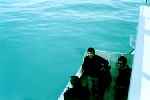
This first picture shows the milky-white/turqouise water colour during a
bloom of Ehux in the North Atlantic, south of Iceland, in 1991
(Photo from Duncan Purdie). It has been verified by people on board that,
yes, the sea really did look that colour!


This is another picture of the strange bright water-colour taken during an
Ehux bloom in the Gulf of Maine, in 1989. The right-hand picture
is an SEM showing the result of filtering the bloom water through a very
fine mesh (Photos from Barney Balch).
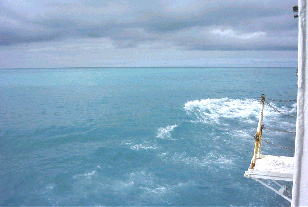
More unusual water colour, this time in the eastern Bering Sea, 26 July 2000
(Photo from Takahiro Iida).
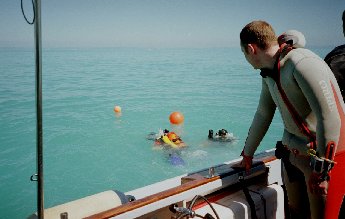
Divers about to enter the "faery glow" of a bloom in the English Channel
south of Cornwall (Hands Deep) on 24th July, 1999 (Photo from K. Hiscock,
Marine Biological Association of the UK). Note the extreme turbidity
obscuring the divers' lower bodies. One of the divers, Steve Widdicombe
from Plymouth Marine Laboratory, relates "The water had the same optical
proporties as skimmed milk. The bloom extended from 0m down to approx 30m.
Deeper than this the water was much clearer but very dark."

A picture from an aircraft travelling over the edge of the same bloom
(Photo: Nigel Bennetts).
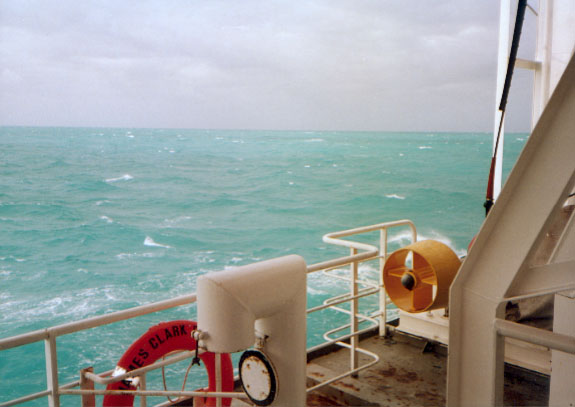
Picture taken from the
James
Clerk Ross of a bloom in the western approaches to the English Channel
(~49N, 9W) on 4th June, 1999 (Photo from T. Tyrrell).


Two pictures taken from the shore of the Ylvesoey fjord (SW Norway: 59 52N,
05 05E) on 12th June, 1993 (Photos from F. Langfeldt, University of Oslo).
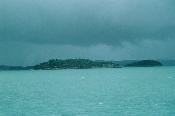
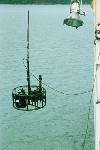
Two pictures of a bloom in Hardangerfjord, south-west Norway, 1994 (Photos
from Emilio Maranon). Coccolith concentrations are as high as in the waters
seen in the previous photos, but the overcast conditions counteract the
appearance of the brighter water.
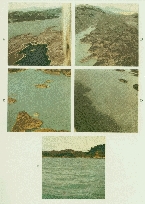
Some pictures of the most intense bloom ever measured (circa. 115,000,000
cells per litre), SW Norway 18 June 1955 (scanned from G Berge, 1962,
Sarsia, 6:27-).
Ehux
home page
Toby Tyrrell : T.Tyrrell@noc.soton.ac.uk











